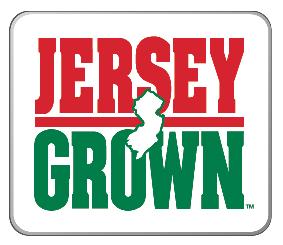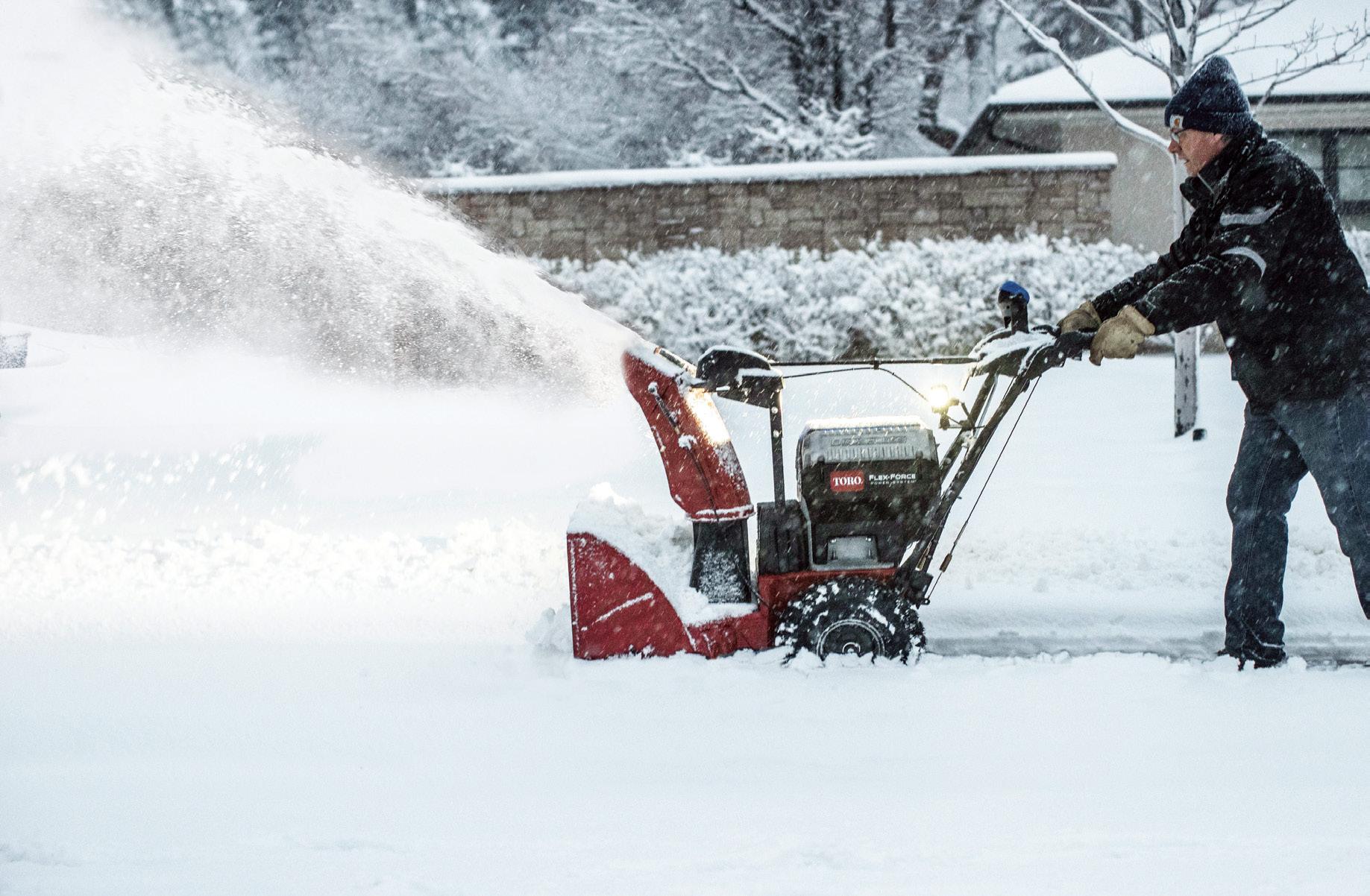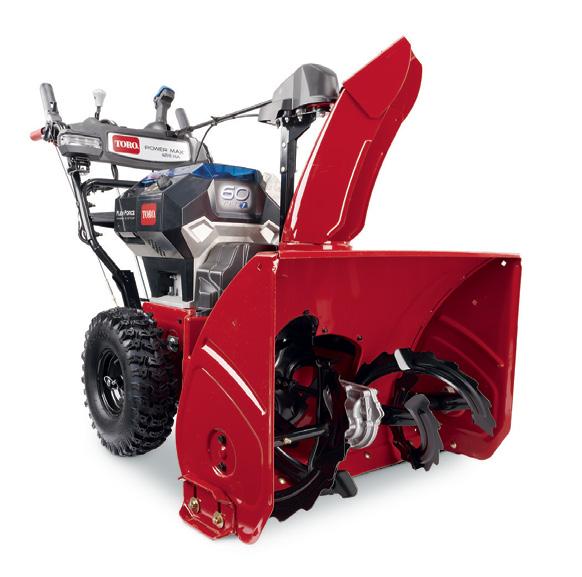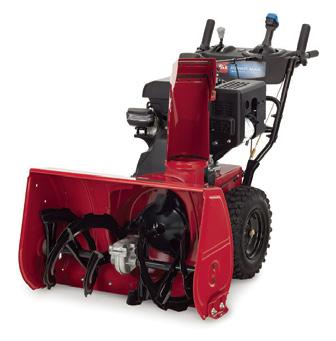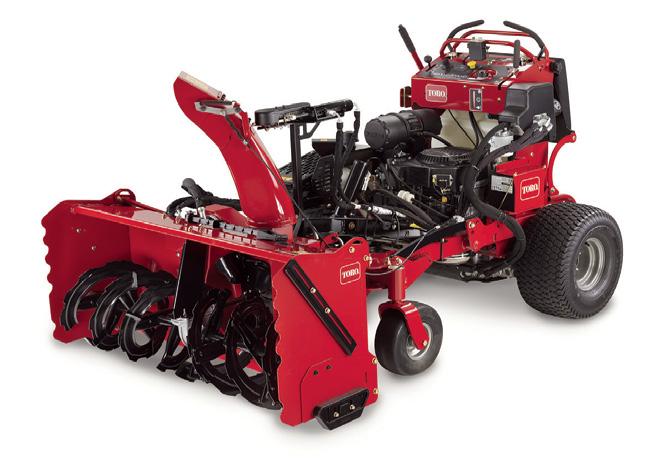Gardener News Gardener News
Serving the Agricultural, Environmental, Horticultural & Landscaping Communities





By Tom Castronovo Executive Editor/Publisher Gardener News
Gardener News proudly bestows our 2024 “Person of the Year” to New Jersey Senator Bob Smith, for his courage, dedication, leadership, and vision in protecting the agricultural, environmental, horticultural, and
landscaping communities in the Garden State.
Smith has been serving in the New Jersey State Senate since 2002, where he represents the 17th Legislative District. Smith serves in the Senate on the Environment and Energy Committee (as Chair), the Judiciary Committee, and the State House Commission.
Previously, Smith served in the New Jersey General Assembly from
1986-2001, He served as Deputy Minority Leader from 1994-95, and Parliamentarian from 1988-89.
Below you can see why Senator Smith is clearly an unwavering advocate in protecting all the residents of this great Garden State through his sound commitments by introducing and supporting educated legislation to keep us all healthy and safe, now and in the future.
The following is a partial list of bills he sponsored that were signed into law.
P.L. 1989, c. 241 Establishes a Green Acres Properties Subcommittee in the State House Commission to expedite review and approval of purchases of land by local government with Green Acres funds.
P.L. 2004, c. 120 “Highlands Water Protection and Planning Act” created rules for smart



This past weekend I was visiting a colleague at the Polly Hill Arboretum on Martha’s Vineyard where there is considerable pressure from deer eating landscape plants. While most plants in the Arboretum were either caged or had some sort of deer protection, there were several Enkianthus completely unscathed. Enkianthus is a genus of Asian shrubs noted for their ornamental pendant, urn-shaped flowers in the spring and their exquisite fall color.
Exhibiting brilliant fall color on this visit was Enkianthus campanulatus, the red-vein enkianthus. In April, it is covered with clusters of small, white, bell-shaped flowers with pinkish-red markings. In the fall, this upright shrub has dazzling fire-engine fall color. Enkianthus perulatus, the white enkianthus is aptly named. Also, in the spring it is covered in clusters of pure white flowers. Enkianthus perulatus ‘J. L. Pennock’ is a selection that has been made for its round habit and fall color that can range from orange to red depending on the site and climate. Overtime E. perulatus will become a large, rounded, broad spreading shrub up to 15-20 feet wide.
In the area, most rhododendrons fall prey to deer browsing. In some areas where deer pressure

By Andrew Bunting Vice President of Horticulture
is significant, rhododendrons will be browsed up to six or seven feet. Daphniphyllum macropodum is a broadleaved evergreen that for all intents and purposes has similar foliage to many rhododendrons. The deer don’t browse on this plant because the alkaloids in the stems are unappetizing. Daphniphyllum macropodum has a similar stature to many rhododendrons, but has shiny and lustrous leaves often with an attractive pink to red petiole (the small stem that connects the leaves to the stem). The flowers of Daphniphyllum are unremarkable, but it does make a stately shrub in the landscape. It is also very tolerant of dry shade conditions.
Another noteworthy broadleaved evergreen touted for its deer resistance is the Florida anise, Illicium floridanum. This native to the southeastern United States thrives in the Philadelphia area. It has narrow, dark
green evergreen leaves. Steve Mostardi at Mostardi’s Nursery in Newtown Square has trialed many Illicium for their resistance to deer and says that this species is by far the most deer resistant. In the spring it has very ornamental, maroon, spikerlike flowers. ‘Hally’s Comet’ has reflexed petals. ‘Alba’ has white flowers. ‘Swamp Hobbit’ is a very diminutive selection making it a perfect consideration for the small yard or courtyard. Orion™ is a new introduction with striking double white flowers. It is a hybrid between I. floridanum and I. mexicanum. All the spicebushes, Lindera are deer resistant. Crushing the stems or leaves of the spicebush will emit a fragrance that is unattractive to deer. Growing natively in the surrounding woodlands is northern spicebush, Lindera benzoin. This understory shrub thrives in considerable shade. It is noted for its abundance of small yellow
flowers before the leaves emerge in the spring. In the fall, this medium-sized shrub has bright golden fall color. There are several Asian species that have merit too. In my front yard, I grow Lindera glauca var. salicifolia . “Salicifolia” means “Salix-like” or “willow-like” hence the narrow willow-like leaves. In the fall the leaves turn an amazing pumpkin orange color. The leaves don’t fall off in the autumn but stay on the plant for the winter. The leaves ultimately turn a beige color and provide considerable ornamental interest throughout the winter. Just as it is about to flower in the early spring the leaves will fall off.
When we think of a buckeye we think of large upright trees. The native bottlebrush buckeye, Aesculus parviflora is one of the best shrubs for deer resistance. This was a plant that was typically found on old estates but is making
a comeback in the garden due to its deer resistance. Overtime this will become a very large mass in the landscape. It spreads by underground stems. It can reach 15-20 feet.
There are many more shrubs that are resistant to deer, but these are some of the most ornamental and easy to grow for this area.
Editor’s Note: Andrew Bunting is Vice President of Horticulture for the Pennsylvania Horticultural Society. He is one of the most recognized horticulturists in the Philadelphia, Pa., region and a highly regarded colleague in the world of professional horticulture. Bunting has amassed a plethora of awards, including the American Public Gardens Association Professional Citation, Chanticleer Scholarship in Professional Development, Delaware Center for Horticulture’s Marion Marsh Award, and the Certificate of Merit from the Pennsylvania Horticultural Society. In addition, Bunting has lectured extensively throughout North America and Europe, and participated in plant expeditions throughout Asia and Africa. Learn more at https://phsonline.org/team/ andrew-bunting
In 2025, Wave® Petunias from PanAmerican Seed® will reach an industry milestone celebrating 30 years of the petunia gardeners trust. Since its debut in 1995, the brand in its distinctive pink packaging has drawn shoppers and fans by the millions as Wave Petunias and Wave Pansies help them grow and feel like a pro. To commemorate such an important anniversary – and help greenhouses and retailers take advantage of extra consumer interest – PanAmerican Seed announces several exciting plans beginning this spring.
First, the company is pleased to share that the brand now has an official consumer holiday: National Wave Day is May 3. Stay tuned for a list of festivities as the Wave Petunia team counts down to the kickoff of its new holiday celebration.
Next, to further confirm that Wave Is Growing™, PanAmerican Seed will be unveiling a new addition to its Wave Pansies line. Top Wave™ Pansies will debut in California during the annual Spring Trials (CAST)
event at the Santa Paula location. Registration will be open soon for members of the industry to get a first look.
Then, to build upon the Wave brand’s larger-thanlife vision of coloring the world with flowers through thoughtful and engaging collaboration with trendsetters, tastemakers, and creatives, Wave Petunias will be launching an exclusive partnership with a renowned artist who will use Wave Petunias in a very special way to herald new growth, hope, and possibility. More details to be revealed in the months to-come.
“After 30 years, the Wave brand remains so special to the horticulture industry not only for its pioneering ways, but because it continues to evolve and meet the needs of the new consumer,” says Sarah Makiejus, Global Marketing Manager for PanAmerican Seed and the Wave Brand Manager. “We have an amazing anniversary year planned that will excite the consumer, create a positive buzz around our industry, and build
business for our PanAmerican Seed customer. I can’t wait for each of these announcements to soar!”
To help greenhouse growers and garden retailers prepare for the increased interest in Wave Petunias and Wave Pansies throughout 2025, a full promotional package will be made available free of charge in November. Advanced access to these marketing assets (Videos, Signage, Social Media Posts, Handouts, etc.) will give the industry the tools it needs to plan local and more personal events with the Wave brand.
Since 1995, the Wave brand has been the leader in providing gardeners worldwide with easy, spreading color. These plants make achieving a picturesque outdoor space a breeze with minimal maintenance required. Because they only need the most basic upkeep, petunias are perfect for gardeners of all skill levels. These sun-loving flowers complement the season, adding colorful personality to any sunny garden space. Visit wavegardening.com for more information.
On behalf of the New Jersey Department of Agriculture, I’d like to wish you and your families a very Happy New Year as we enter 2025.
Last year was challenging for many involved in agriculture. From a cool, wet spring to parching droughts through the late summer and fall, our farmers and nursery growers had to adjust constantly for their crops.
On the other hand, fall-themed agritourism operations offering pumpkin and apple picking, with hayrides and corn mazes, appreciated the dry weekends that helped attract people to their farms.
So, what is ahead for agriculture in this new year? Secretary of Agriculture Edward Wengryn, the New Jersey State Board of Agriculture, and the Department’s senior staff will be working on strategic planning. This NJDA strategic plan will create short- and long-term visions and goals for the Department and industry.
In one way, the Department and representatives from the industry do some level of strategic planning every year when we gather for the annual State Agricultural Convention.
This year, in the first week of February, the 110th Annual New Jersey State Agricultural
As we welcome 2025, it’s a chance for all of us in the agricultural community to reflect on the past year and gear up for the opportunities ahead. NJ FSA is proud to have worked alongside you, providing the tools and support needed to navigate both challenges and successes. 2024 brought its share of trials, but it also highlighted the strength and resourcefulness of New Jersey’s farmers. Increased federal funding enabled us to provide critical support, ensuring many operations remained viable during a time of economic uncertainty. Program participation reached new heights, underscoring the value of the services we provide. More importantly, we’ve worked hard to tailor our programs to the specific needs of New Jersey farmers, ensuring that the assistance we offer is practical, relevant, and impactful.
Looking to the year ahead, preparation and adaptability will be essential for continued success. Weather, market fluctuations, and rising input costs remind us that farming is unpredictable. This is why focusing on building a strong foundation—whether by improving soil health, reducing risk, or planning for growth—is more important than ever. FSA is here to help, offering tools and resources that support you every step of the way.

By Joe Atchison III Assistant Secretary of Agriculture
Convention will be held at Harrah’s Resort in Atlantic City. There, nearly 100 delegates from around the state, representing dozens of agricultural organizations, will gather to discuss and pass resolutions on a variety of topics that impact agriculture.
These resolutions, focused largely on legislative and policy changes needed to adapt to industry trends, shape the NJDA’s mission for the year. This event is open to the public if you wish to attend or listen to the proceedings online.
The Department of Agriculture’s divisions continue to look to meet the needs of constituents, both for immediate efforts needed to address problems as well as looking into the more-distant future.
The Division of Agriculture and Natural Resources is examining and working with producers to counter the effects of climate change, to reduce food waste, and

explore the impact PFAS (aka “forever chemicals”) will have on our agricultural community.
The Division of Animal Health monitors the state’s, nation’s, and worldwide threats of animal diseases like Highly Pathogenic Avian Influenza (HPAI) and their impacts on human and animal health.
The Division of Food and Nutrition is responsible for schooland community-feeding programs across New Jersey, including School Breakfast and Lunch as well as oversight of Emergency Feeding Operations (EFOs) and other food banks. These first responders in the world of hunger continue to see increases in demand.
That division also administers, in conjunction with the New Jersey Department of Human Services and the Department of Education, the new Summer EBT program
that provides funds to students in need to have fresh food through the summer.
The Division of Plant Industry will be treating invasive pests and plants including Spongy Moth (LDD) and Spotted Lanternflies while also overseeing the Philip Alampi Beneficial Insect Laboratory (PABIL) to increase the use of Integrated Pest Management and reduce the use of chemical pesticides in agriculture.
The State Agricultural Development Committee (SADC) has preserved over 250,000 acres of farmland and seeks to continue their mission to preserve another 250,000 acres. They also have created a NextGen new farmer program to get more growers into the industry.
Finally, the Division of Marketing and Development, of which I am director, will be
By Bob Andrzejczak State Executive Director
One of the best ways to prepare for the future is by diversifying and modernizing your operation. Whether it’s rotating crops to enhance soil productivity, streamlining operations with new equipment, or exploring opportunities for valueadded products, small changes can have a big impact. Our programs, including risk management options and disaster assistance, are designed to protect your operation and help you adapt to whatever challenges come your way.
Farming is more than a livelihood; it’s a way of life. It’s about tradition, family, and community. The values that drive our farmers—hard work, perseverance, and a commitment to excellence—are the backbone of agriculture in New Jersey. As we step into 2025, let’s work together to ensure those values are carried
forward for generations to come.
This is also the perfect time to think about the future of your farm and the next generation of farmers. Whether it’s mentoring young producers, planning for succession, or finding innovative ways to improve operations, these efforts are critical to preserving our agricultural legacy. FSA is committed to supporting new and beginning farmers with resources and programs that help them take their first steps in agriculture. By investing in their success, we’re ensuring the strength of our farming community for years to come.
Collaboration and community are at the heart of everything we do. Farming has always been about more than one individual operation—it’s about neighbors working together, sharing knowledge, and supporting
growing the New Jersey Native Plants program to encourage homeowners and landscapers to utilize more native plants in their landscaping. We also will be seeking to expand the “Made With Jersey Fresh” value-added products program to provide an additional source of income for growers in the Garden State.
Cutting across all divisions, the Department will be examining the ways Artificial Intelligence (AI) can safely and effectively improve the way we do business and assist our farmers and residents all across New Jersey. While this new approach to technology may be daunting to some, a properly designed and monitored AI system could become invaluable for both the industry and those of us in agencies designed to foster it. No matter how your 2024 turned out, we hope you will have a better 2025.
Editor’s Note: Joe Atchison III is the New Jersey Assistant Secretary of Agriculture. Atchison is also the Director of the Division of Marketing and Development for the New Jersey Department of Agriculture. He can be reached at (609) 292-3976.
2025, Harrah’s Atlantic City.
The NJ FSA is proud to host a series of educational sessions at this year’s New Jersey Fruit and Vegetable Growers Association and State Agricultural Convention. Join us on February 4th in the Wildwood Room for sessions that cover essential FSA programs, services, and resources designed to support New Jersey’s farmers.
one another in times of need. As we enter 2025, let’s strengthen those bonds and continue to build a resilient and thriving agricultural community here in New Jersey.
The New Jersey Farm Service Agency is eager to continue working alongside you. For those who we’ve had the privilege of serving, we’re grateful for the trust you’ve placed in us. And for those who haven’t yet worked with us, we welcome the opportunity to support you and your operation. Our mission is to provide resources, guidance, and assistance to help you succeed—no matter the challenges or opportunities ahead.
Here’s to a new year filled with possibility and growth. Let’s make 2025 a year of progress and prosperity together!
NJ FSA Educational Sessions at the Ag Convention Feb 4th - 6th,
2:15 p.m. – “How Can USDA FSA Help You? All Things NAP” 2:45 p.m. – “FSA Farm Loan Programs and the New Enhancing FLP Rule”
3:15 p.m. – “Why County Committee Elections and Acreage Reporting Are Important”
3:45 p.m. – “How Can USDA FSA Help You? Marketing Assistance Loans and Farm Storage Facility Loans Overview”
Editor’s Note: Bob Andrzejczak is the State Executive Director of the USDA Farm Service Agency (FSA) in New Jersey. He can also be reached at 609587-0104 during regular business hours. For more information, please visit https://www.fsa.usda.gov/ state-offices/New-Jersey/ sed-biography/index

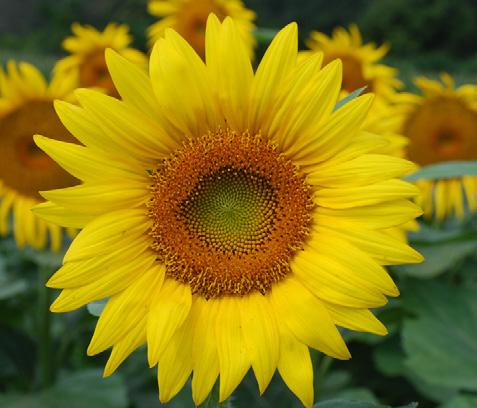





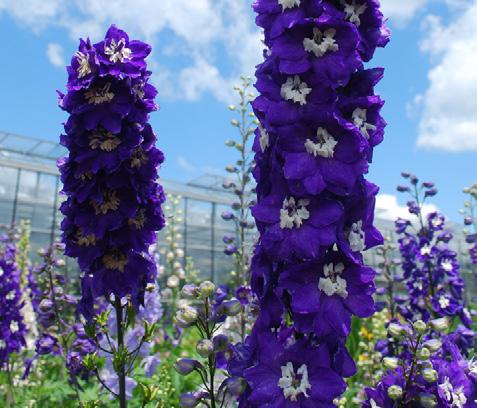
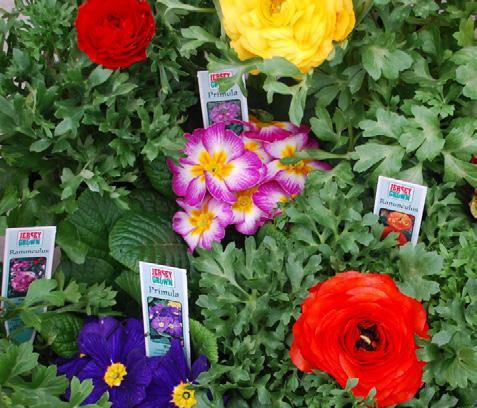


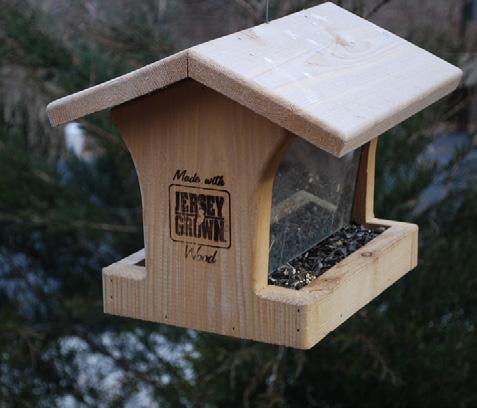



We are excited to announce that our 44th Home Gardener School (HGS) has returned!
March 15, 2025 | 9:00 am – 4:00 pm | New Brunswick, NJ. Early Bird Fee $135* *

Atlantic County
Phone: 609-625-0056
Bergen County
Phone: 201-336-6780
Burlington County Phone: 609-265-5050
Camden County Phone: 856 216 7130
Cape May County Phone: 609-465-5115
Cumberland County Phone: 856-451-2800
Essex County Phone: 973-228-2210
Gloucester County Phone: 856-224-8040
Hudson County Phone: 201-915-1399
Hunterdon County Phone: 908-788-1339
Schilling Director
This event includes many horticulture topics for every experience level – beginners to seasoned Master Gardeners There's something for everyone! Editor’s
Mercer County Phone: 609-989-6830
Middlesex County
Phone: 732-398-5260
Monmouth County Phone: 732-431-7260
Morris County Phone: 973-285-8300
Ocean County Phone:732-349-1246
Passaic County Phone: 973-305-5740
Salem County Phone: 856-769-0090
Somerset County Phone: 908-526-6293
Sussex County Phone: 973-948-3040
Union County Phone: 908-654-9854
Warren County Phone: 908-475-6505

“The only constant is change” is a well-worn adage for a reason. It reflects a truism in all our lives and is present across all organizations. Rutgers Cooperative Extension (RCE) is most certainly not an exception. I write this month to share some insights into what I foresee in the coming year.
A few years ago, I wrote a Gardener News piece outlining the generational turnover being experienced in RCE that is spurred by retirements—and fortunately, an influx of very talented new faculty and staff that will shape and define our organization in the years and decades to come. With them come new ideas, new skills, and an enthusiasm to build the relationships in our communities that are central to good Cooperative Extension work. This is on full display in one program area that will be of particular interest to Gardener News readers: Rutgers Master Gardeners.
Across the country, master gardener programs stand as one of the largest Cooperative Extension footprints in terms of reach. The USDA’s National Institute of Food and Agriculture reports that there are more than 84,000 certified Master Gardeners volunteer across the U.S. providing researchbased information to the public through workshops, helplines in county extension offices, and other programs. According to a 2020 impact report, these remarkably dedicated individuals devoted more than three million volunteer hours to these efforts, which directly reached more than 8.4 million Americans (it’s further estimated that more than 15 million people were reached through various media outlets). To all existing (and future) Rutgers Master Gardeners reading this column, I offer heartfelt gratitude for your dedicated service, passion, and impact in our state.
Going back to the concept
of change, navigating it can be challenging. Fortunately, this is a strength of Cooperative Extension. How does Rutgers Cooperative Extension, and more broadly, the New Jersey Agricultural Experiment Station, adapt to the changing needs in our state?
We gain valuable feedback from the NJAES Board of Managers, county government partners, and a host of industry and community bodies. But foremost, we listen. We listen to the needs expressed by the people, families, communities, and businesses of the state, develop and deliver responsive programs, and evaluate their effectiveness.
This process applies to all Cooperative Extension programs, including home and public horticulture. Earlier in the year, Ruth Carll joined Rutgers Cooperative Extension in the Department of Agriculture and Natural Resources as the State Leader in Consumer Horticulture. Among her early endeavors was the completion of a comprehensive review of the Rutgers Master Gardener program (such programs are currently operating in 16 counties), including volunteer motivation, training, activities, and impact. Over a thousand master gardeners provided input. One outcome of this dialog is a revisioning of the volunteer training process. You may have seen social media and other announcements that a new training model will be piloted in 2025 in several counties (Passaic, Mercer, Middlesex, Atlantic, Cape May, Cumberland, Hunterdon, and Union). This model will explore aligning an 18-week in-person course, an experiential internship, and a series of in-depth continuing education opportunities. Volunteers will complete the certification process in one year, becoming certified Rutgers Master Gardeners in December. This pilot effort is part of our ongoing efforts to increase
access and the impact of our high-demand home horticulture programs.
I draw attention to another exciting Cooperative Extension event: the 2025 Home Gardener School, coordinated by our Office of Continuing Professional Education. This program will be held on March 15, 2025, and registration is now open at https:// cpe.rutgers.edu/home-gardenersschool. We are working to strengthen this well-liked program following the challenges presented by the COVID-19 pandemic. The program is packed with informative topics spanning 40 workshops offered by Rutgers faculty and experts from throughout the state. The program will cater to the interests of both beginners and advanced participants. A track on accessibility best practices within horticulture will be offered in a hybrid format (i.e., with in-person and virtual options).
Returning again to the theme of change, I think of the evolving technologies that are influencing how work is done. I speak here of artificial intelligence, machine learning, large language models, and a host of tools that bring these advancements into our labs, research programs, and communication modalities. The power and sophistication of these tools will fundamentally shape how we in Cooperative Extension engage with the people we serve, allowing us to better and more efficiently meet their needs and connect them with the resources, programs, and expertise of Rutgers University. We will learn together what these technologies hold in store for home horticulture programs.
I close with my continued thanks to Tom Castronovo for the opportunity to offer this monthly column to keep readers apprised of goings-on in Rutgers Cooperative Extension.
The Department of Agricultural, Food, and Resource Economics (DAFRE) at Rutgers University held a luncheon on November 6 to celebrate the recipients of this year’s Emily H. and Erwin G. Agthe Endowed Scholarship. The $3,000 scholarships, open to fulltime juniors and seniors majoring in environmental and business economics, are based on both merit and need.
DAFRE awarded six students the scholarship this year, up from five in previous years, for their academic excellence, character, and potential to make an impact in environmental science, policy, and economics. The recipients, who display an unwavering commitment to their studies and a drive to contribute meaningfully to the field, are Gabriel Coimbra Viana da Costa, Kaleigh Duffy, Mitchell Lane, Ulyses Paiz, Heer Patel, and Faith Van Wart.
Established by Rutgers alumnus Donald E. Agthe, AG ’62, in loving memory of his parents, this scholarship reflects a heartfelt commitment to fostering educational opportunity and promoting academic excellence within the Environmental and Business Economics program at the School of Environmental and Biological Sciences. This scholarship stands as a tribute to Emily H. and Erwin G. Agthe, ensuring their legacy endures as a beacon of opportunity for Rutgers students. Their story and commitment will continue to inspire and live on through the impactful work of students like Gabriel, Kaleigh, Mitchell, Ulyses, Heer, and Faith—each of whom embodies the mission to drive positive change and champion sustainable solutions in an increasingly complex world.
As one of America’s longest serving and renowned land-grant institutions, Rutgers University empowers food producers worldwide with cutting-edge scientific expertise. The university’s acclaimed “Jersey Roots, Global Reach” initiative shines through in its exceptional partnership with the Federated States of Micronesia (FSM), a vast island nation in the North Pacific.
To celebrate this landmark collaboration, Rutgers had the privilege of hosting two esteemed FSM dignitaries, Honorable Secretary Andrew Yatilman and Honorable Secretary Elina Akinaga, on September 21. Guided by Jim Simon, Dena Seidel, Ramu Govindasamy, AJ Both, Mark Robson, Roland Hagan and Julie Lockwood, the distinguished guests toured SEBS’s premier plant and marine science labs, research fields, and greenhouses, showcasing Rutgers’ advanced research facilities and innovations.
The Rutgers interdisciplinary food systems science team began its work with FSM in 2020 and is led by Jim Simon (Plant Biology) in concert with Ramu Govindasamy (DAFRE), Dena Seidel (Plant Biology) and Oscar Schofield (Marine and Coastal Sciences). Rutgers has been supporting FSM’s sustainable food production goals on several projects that include food security policy and assessing climate change’s impact on FSM’s farming families and strategies for the development of local food processing.
During the dignitaries’ visit, Dean of the School of Graduate Studies and Distinguished Professor of Plant Biology Mark Robson led a discussion on ways the Rutgers-FSM partnership could grow to include faculty, student and curriculum exchanges. “We are excited to explore how Rutgers and FSM can learn from each other and help strengthen the strong ties that have developed over these last few years,” said Robson.
Rutgers School of Environmental and Biological Sciences (SEBS) has earned official accreditation from the Society of American Foresters (SAF) for two tracks within its Ecology, Evolution, and Natural Resources (EENR) program. Effective January 1, 2025, the EENR Natural Resources and Ecosystem Management track and Urban Forestry track will carry SAF accreditation.
This prestigious recognition positions Rutgers as the first university in New Jersey to be accredited by the Society of American Foresters, a leading organization that sets rigorous educational standards for forestry, urban forestry and natural resource programs.
“We are very excited about the opportunities the accredited program in urban forestry creates for our students and the state. As one of the most densely populated states in the nation, and a state that includes a wide range of landscapes, New Jersey will benefit from educational opportunities in urban forestry and expanding opportunities in arboriculture and related fields,” said
Laura Lawson, Executive Dean of SEBS.
For students, the accreditation offers a clear advantage in the job market. Employers in the forestry field often seek graduates from SAF-accredited programs, knowing these students have met rigorous academic and professional standards.
Achieving this accreditation was a process that spanned many years, culminating in a comprehensive self-evaluation report and an extensive, multi-day site visit with an SAF accreditation committee. This accomplishment reflects the dedication and expertise of Rutgers faculty and the University’s commitment to fostering excellence in education.
This initial accreditation is good through December 2029. Learn more about the accredited programs.
The Society of American Foresters is the organization that represents forestry professionals and provides leadership to ensure that all members of the profession achieve excellence in sustainable forestry and natural resource management.
Like “The Little Engine That Could,” this small bottle – just 5.5 ozs – of hot sauce is meant to convey the enterprising work of the team at the Rutgers Food Innovation Center (FIC) in their quest to bring hope to entrepreneurs looking for commercial success for their food-related products.
A unique business incubator that is part of the New Jersey Agricultural Experiment Station (NJAES), the center supports start-ups as well as established businesses, here in the US and globally. FIC offers a deep well of resources to support clients from concept to commercialization and has successfully helped 3,000 businesses over the past 24 years.
Recently, the FIC team turned the tables and created their own new innovative product – Rutgers F.I.R.E. Hot Sauce, which derives its label from the original name of the center, the Rutgers Food Innovation Research and Extension Center, F.I.R.E.
FIC has worked with many hot sauces over the years. In addition, the team typically tastes about 200 to 300 hot sauces a year, so it is a category we are very familiar with.
The Rutgers F.I.R.E. Hot Sauce has an interesting flavor profile, different from many other hot sauces. The cranberries in the product give the hot sauce an interesting tart flavor and a richer ruby red appearance.







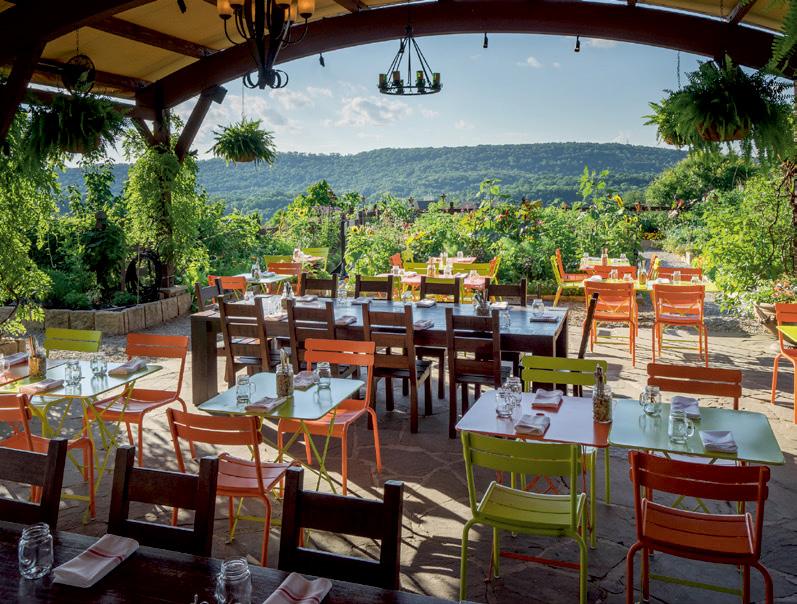






By Andy Lagana Chef
Hello Gardener News
readers. As we start this new year, I look forward to making traditional comfort food –meals for when it’s cold outside and you have the fireplace going. Here is a great Chicken and Dumplings recipe you’ll enjoy.
The history of this dish has been debated. Some say it originated in the South during the antebellum period and was a staple during hard economic times. The dish was likely brought to America by European settlers and gained popularity as it allowed cooks to stretch a small amount of chicken to feed a large family. Others say chicken and dumplings originated during the Great Depression, but some say it’s hard to imagine that this era would lead to a new type of thrifty cooking when Southerners had already been frugal for a long time. Whatever the true origin, I’m glad it’s a popular mainstay.
Ingredients needed are 2-3 chicken breasts (about 3 cups of cooked chicken), 2 tbsps. olive oil, salt & pepper to taste, 2 quarts chicken broth, 2 cups all-purpose flour, ½ tsp baking powder, 2 tbsps. cold salted butter – cubed, 1 cup milk, and flour for rolling out the dumplings.
To get started, preheat the oven to 350 F° degrees. Spray a baking sheet with nonstick cooking spray. Place the chicken breasts on the sheet. Drizzle the olive oil on the chicken, and season with salt and pepper. Then bake the chicken for about 45 minutes, which will reach an internal temperature of 165 F ° degrees when fully cooked. Once the chicken
is cooked, shred it with two forks.
Then pour 2 quarts chicken broth into a large pot and start warming it up on the stove top while you make the dumplings. In a medium bowl, combine the all-purpose flour and baking powder. Then add in the cold salted butter. Combine using your fingers, fork, or a pastry cutter. The butter should resemble tiny pebbles when combined well. Pour in the milk, then mix it all together.
Dust your counter with a generous amount of flour. Place the dumpling dough on the counter and dust it with additional flour. With a rolling pin, roll the dough out to about 1/4” thickness. Be sure to add more flour as necessary to keep it from sticking underneath or to your rolling pin. Using a knife or a pizza cutter, start cutting out your dumplings into squares. Dust dumplings with a bit more flour. The extra flour is going to help keep them from sticking but will also thicken your chicken broth when you add them to the pot. Bring chicken broth up to a boil. Add in shredded chicken and stir. Begin adding dumplings one at a time so they don’t stick together. Stir frequently while adding them. Allow dumplings to cook for about 15-20 minutes. You should notice your broth starting to thicken and your dumplings may start to sink a little to the bottom because they are soaking up the broth. Take one out and taste test it –the doughy taste should have dissipated.
The NJ Agricultural Society is pleased to announce that they are accepting applications for the next New Jersey Agricultural Leadership Development Program (NJALDP).
A great side to serve with this meal is a green bean casserole. Ingredients needed are 1 - 1/2 pounds fresh green beans trimmed, 3 tbsps. butter, 1/2 onion thinly sliced, 1 clove garlic minced, 1/2 pound white button mushrooms - sliced or chopped, salt & pepper to taste, 3 tbsps. flour, 1 cup low sodium chicken stock, 1/2 tsp. Worcestershire, 1 cup heavy cream (or half and half) and 1 can french fried onions.
Start with fresh green beans that have been rinsed and had the ends trimmed. Place them in boiling water for 5 or 6 minutes. Then remove them and place in cold ice water.
Next, melt butter over medium heat, add mushrooms and sprinkle with salt. Cook until the mushrooms are golden brown. If you like, add some sliced onion.
Add chicken broth and worcestershire. Then, add in the half and half. You can use milk also, but not skim milk. Place the green beans in a 9×13 casserole dish and pour the mushroom sauce over them. Top with French fried onions, but if you have the motivation, make them homemade.
Bake in a preheated 375° F degree oven for 25 minutes. When it comes out of the oven, you have the crispy onions on top of hot creamy mushroom sauce covered green beans. Finally, for a wine pairing, Chardonnay goes well with chicken and dumplings, and the wine’s richness and tang complement the dish. Hope you enjoy!
The purpose of the NJALDP is to provide educational programming for individuals involved in farming and agribusiness, guiding them to become informed, articulate leaders. Every few years, we invite a new cohort of participants to join the program, taking the first step to becoming the leaders of tomorrow.
The two-year program, hosted in collaboration with Rutgers University, consists of ten residential seminars in NJ (2-3 days each) and two out-of-state trips. Participants learn from experts in their fields, meet with government and business leaders at every level, and take field trips for a first-hand view of the issues at hand. Throughout the process, we provide opportunities for participants to hone their own leadership skills.
The program is open to those either working in or collaborating with New Jersey’s agricultural industry and interested in enhancing their skills in communication, marketing, advocacy, and leadership. This two-year program will commence in the fall of 2025 and conclude by the spring 2027. The curriculum will consist of ten seminars lasting 2-3 days each. The program will also include a trip to Washington, DC, and an international trip (location to be determined). A two-year membership in the NJ Agricultural Society and the NJ Farm Bureau is also covered by tuition.
Since 1995, over 220 individuals have participated in the NJALDP. Many have gone on to serve on county, state, and national agricultural boards. Call (609) 462-9691 or email leadership@njagsociety.org for more information. Applications must be received by the posted deadline to be considered. Interviews will be held in early June, and all participants will be notified by June 15.
Applications must be in by April 1, 2025, or earlier. Learn more at https://www.njagsociety.org. Click on the Programs Link. If you have any questions or need further assistance, please call (609) 462-9691 or email leadership@ njagsociety.org
Attention Landscape Professional and Gardeners. Make sure your contracts and bids take this into consideration. NJ Treasury Officials announced that the gas tax will rise by 2.6 cents on January 1st. New Jersey charges two separate gas taxes, the Motor Fuel Tax, which charges a fixed rate of 10.5 cents per gallon on gasoline and 13.5 cents per gallon on diesel, and the Petroleum Products Gross Receipts Tax, which adjusts annually to meet the revenue targets. This is the gas tax that will see rates increase to 34.4 cents for gasoline and 38.4 cents for diesel in the new year. Overall, the increase will bring New Jersey’s combined gas taxes to 44.9 cents per gallon, up from 42.3 cents, while total taxes on each gallon of diesel will rise from 49.3 cents to 51.9 cents.
It’s January, and there is hardly a thing to do in the garden. Even the onslaught of seed catalogs is still a few weeks away.
This is the time of year that I catch up with an old friend, 233 years old in fact. The Old Farmer’s Almanac was started in 1792 by Robert B. Thomas. George Washington was our President, and many American households had but two books – a Bible and an Almanac. It is the oldest continuously published periodical in the United States.
An almanac, in its simplest form, is a book containing a calendar that includes notations for holidays, as well as astronomical information such as the rising and setting of the sun and moon, the phases of the moon, and high and low tides. The first printed almanac was published in Vienna in 1457. The first American almanac, “Almanack Calculated for New England,” was published in 1639 by William Pierce in Massachusetts. By the late 1700’s, many almanacs were being published, but Thomas’s became an immediate success. Why? Perhaps it was Thomas’s guiding principle –“Our main endeavor is to be useful, but with a pleasant degree of humor.” Perhaps it was the accuracy of his weather forecasts. Thomas used a complex series of natural cycles
You may be familiar with the right whale. This whale was slow moving, swam close to shore, and had convenient habit of staying afloat after dying which, according to whalers, was the right thing to do. We in NJ have the ‘right’ oak, which is generally called the chestnut oak, Quercus montana
This oak is right because it has edible acorns (if you leach them forever and really go for bitter meal), lumber which is relatively rot resistant, a moderate tree height of about 70 feet, is a strong supporter of wildlife, and is drought and wind resistant in exposed areas. OK, if you hate large acorns, which are about 1 inch long and ½ inch wide, falling on your head or driveway maybe it is not the right oak for you.
Chestnut oak is also the right oak to easily identify as you hike in January. The bark on mature trees is deeper and thicker than any other common forest or ridge top tree. This fact and the presence of large acorns and leaves with rounded lobes will ID the tree for you even in winter.

By Lesley Parness Garden Educator
and phenology to devise a weather forecasting formula which brought “uncannily accurate results.” These predictions were calculated by studying solar activity, astronomy cycles and weather patterns using an 11-year moon cycle first theorized by Galileo. Its publishers believe the accuracy rate of these predictions to be about 80%. Other sources put it at about 55%. Its astrological and lunar charts, however, are completely correct. In any case, this secret forecasting formula is stored under lock and key at the Almanac offices in Dublin, New Hampshire. I settle down with a big cup of coffee and the Almanac, its familiar cover a welcome and calming sight. I bring scissors and scotch tape because my way of reading the almanac is to “de-construct” it. First, I check for advertisements

of interest and make note of their contact information. Next – recipes. Over the centuries, the Almanac has taught Americans how to use new ingredients like spices from the West Indies in the 1800’s, how to use new kitchen machinery like the stove in the 1900’s and currently how to convert traditional recipes for use in the air fryer and convection oven. The current almanac has a fabulous recipe that First Lady Dolley Madison favored for “Fairy Butter,” just email me for a copy.
I take note of “Regional Weather” articles to determine the best months to travel. I cut out the pages on the best fishing dates and give them to my husband. Crop rotation and planting dates go right into my new garden journal. The lunar gardening pages I put into
my main calendar, and I use a highlighter to mark the full and new moons of each month there.
I believe that whatever success I have in my garden, is due to my observance of lunar cycles. Simply put, the moon, which pulls the tides, also controls water underground. Each lunar quarter and the moon’s waxing and waning, has its own to do list for planting, thinning, harvesting. The “Best Days” list goes right on the kitchen bulletin board for quick and constant consultations. If you are not already using the moon’s cycles to guide your garden, perhaps you will try it in 2025. You can get all the information you need to start lunar gardening at the almanac’s website. After I’ve highlighted and cut up my copy, there are still lots of interesting stuff left – a guide
By Hubert Ling Horticulture Chair
Chestnut oaks grow best on upland slopes with deep rich soil and good drainage. However, the plant also competes very well on ridgetops in rocky, poor, dry soil. Plants on ridges will definitely grow much shorter, reaching about 40-50 feet, while trees in rich soil, protected by other trees, typically grow 60-110 feet in NJ. The scientific name Quercus montana is from Latin: Quercus means oak and montana refers to residing in mountains and on the ridgetops where this oak is common.
The leaves on chestnut oak are about 5-8 inches long and 3 inches wide with about 20 shallow, rounded lobes on each side of the leaf. The leaves are borne alternately on stout
twigs. Both male and female flowers lack petals and are borne on the same tree. The flowers mature in late April and early May. Male flowers are 2-3 inches long and hang down on slender filaments crowded with hundreds of bright yellow anthers. The female flowers are dark, squat, and have a single stigma and a relatively large ovary. Oak trees are wind pollenated and don’t rely on insects at all.
Chestnut oak acorns are a good food source for domestic animals and wildlife; they mature in one or two years. Every 2-4 years a bumper crop is produced (a mast year). These acorns are used to fatten cattle, swine, and poultry. They are also highly prized by squirrels, chipmunks, bears,
for plastic recycling, a description of how to measure hail, a list of when to replace everything from toothbrushes to smoke alarms. I keep my battered almanac in the car. It makes a great companion at diners and in doctors’ offices. Blending centuries of traditional wisdom with current thinking in a seamless way helps me feel part of the continuum of American gardening. Next January, this old friend and I will surely visit again.
Editor’s Note: Lesley Parness offers a variety of presentations and workshops for garden clubs, plant societies, and horticultural gatherings. Recently retired from her position as Superintendent of Horticultural Education at the Morris County Park Commission, and with four decades of teaching environmental science and garden education, her focus now is garden history. A complete listing of her talks can be seen at lesleyparness. com and she can be reached at parness@verizon.net. This column will appear in the paper every other month.
deer, turkeys, and raccoons. In addition, the foliage is utilized by hundreds of species of moths and butterflies. Chestnut oak bark has a 12% concentration of tannic acid and because of this it was used up to the 1950’s for tanning hides. The root system is very extensive and deep, which may explain why this tree is exceptionally drought resistant, especially in exposed areas.
Propagation of chestnut oak is generally by acorns. Collect the acorns as soon as they drop and check them for the presence of small holes which are produced by acorn weevils. Such infected acorns will not germinate. Next you should do the float test. Acorns which are non-viable are generally filled mostly with air and will
float, while most of the good viable acorns will sink. I had a friend who planted 3,000 acorns in individual pots in his nursery. What do you think happened? Well, he lost 3,000 potential oak seedlings to squirrels that dug up every last one. He then asked me for 4,000 additional acorns and protected these with hardware cloth to great success. Be sure to protect young oaks from deer damage until the tree trunks are several inches in diameter.
As many large white and red oaks have been harvested, lumbermen have turned more often to the medium sized chestnut oaks trees. The wood is of high quality and is dark brown, hard, strong, and durable. It has been used for fencing, railroad ties, flooring, and furniture. Check out this versatile tree and see if it is right for you.
Editor’s Note: Hubert Ling is Past President of The Native Plant Society of NJ and Horticulture Chair. He can be reached at milhubling@verizon.net.

Tom Castronovo/Photo
Warren County Farmer Richard Gardner being sworn into his term on the New Jersey State Board of Agriculture; Linda Walker, Executive Assistant at the New Jersey Department of Agriculture, holding the bible; and New Jersey Senator Douglas J. Steinhard.
Warren County farmer Richard Gardner was sworn into his term on the New Jersey State Board of Agriculture by Senator Douglas J. Steinhard from the 23rd Legislative District during the Board’s November 2024 monthly meeting.
Gardner, representing the hay and grain industry, owns and operates Spring Ridge Farm in Asbury which consists of 225 owned and rented acres. His farm grows hay, corn, soybeans, barley and oats, while also raising 90 head of commercial beef, 1,000 broilers yearly, and 25 to 30 hogs for private customers.
Gardner is a fifth-generation farmer who has dedicated decades to agriculture and public service in New Jersey. Along with retired Agricultural Agent Everett Chamberlain, Gardner started the Warren County Livestock Association in 1981 and has been an active member of the Warren County Board of Agriculture since 1988, where he has served as President, Vice-President, and Secretary, and is still an active member. Gardner has been a member of the Rutgers Board of Managers, which included a trip to Washington, D.C. to lobby for full funding of the Land Grant Mission. Since 1994, he has been a member of the New Jersey Beef Industry Council. He is also a member of the New Jersey and American Farm Bureau, a 50-year member of the Livestock Cooperative Auction Market Association of North Jersey, where he is the director, and was co-chair of the Garden State Grazing Coalition from 1999-2005. He also holds a degree from Delaware Valley College.
Gardner joins other board members with the county and commodity groups they represent in Board President Bob Blew, Cumberland, nursery; VicePresident Lisa Specca, Burlington, vegetable; Kurt Alstede, Morris, fruit; David DeFrange II, Hunterdon, nursery; John Hart, Mercer, hay and grain; Stephen V. Lee IV, Burlington, fruit; and Joel Vierick, Gloucester, vegetable.
The State Board of Agriculture comprises eight members who serve for four years. By law, at least four of its members must represent the top commodity groups in the state, which are nursery, vegetable, fruit, and grain.
(Continued from page 1)
growth and land preservation in the Highlands region, which is the source of half of the state’s drinking water, and also created the Highlands Council, a new agency to oversee land preservation and development, and tasked with creating a regional master plan.
Preserving Parks for Future Generations
In 2006, a ballot referendum sponsored by Senator Smith was passed by New Jersey voters to allow a portion of the revenue from the corporate business tax to be dedicated toward the acquisition and development of open space lands for conservation and recreation. This amendment gives parks the funding they desperately need by putting existing tax revenue to good use without raising taxes.
P.L. 2006, c. 72 Appropriates $15 million from “Garden State Farmland Preservation Trust Fund” for farmland preservation purposes in Highlands Region.
P.L.2009, c 256 Establishes Forest Stewardship and Forest Certification Programs in DEP; establishes Forest Stewardship Incentive Fund.
Green Acres Blue Acres
On November 3, 2009, voters passed the ballot initiative sponsored by Senator Smith to make an investment in open space preservation. This allowed programs such as the Green Acres public recreation and conservation program, farmland preservation, the Blue Acres program for flood plain and watershed land, and historic preservation to continue. New Jersey voters understood the importance of this initiative and recognized that our state could not afford the consequences of failing to make the investment in our future. Open space preservation is absolutely vital to preserving our quality of life.
Open Space, Farmland & Historic Preservation
On November 4, 2014, voters overwhelmingly passed the constitutional amendment sponsored by Senator Smith creating a stable source of funding for open space, farmland, and historic preservation. Since 1961, New Jersey voters have passed 14 out of 14 ballot measures supportive of funding for open space, farmland and historic preservation. New Jersey has one million acres to protect for our clean water, economy and quality of life.
P.L.2017, c. 136 Establishes State food waste reduction goal of 50 percent by 2030.
P.L. 2018, c. 64 Revises the “New Jersey Smoke-Free Air Act” to prohibit smoking at public beaches and parks.
P.L. 2019, c. 93 Directs the Department of Agriculture to establish a public awareness campaign for food waste.
P.L. 2019, c. 442 Establishes the NJ Climate Change Resource Center at Rutgers University.
P.L. 2020, c. 117 Prohibits provision or sale of single-use plastic carryout bags, single-use paper carryout bags, and polystyrene foam food service products; limits provision of single-use plastic straws; appropriates moneys from Clean Communities Program Fund for public education.
P.L. 2021, c. 170 Establishes dualuse solar project pilot program for unpreserved farmland; allows land used for dual-use solar project to be eligible for farmland assessment under certain conditions.
P.L. 2023, c. 20 Extends Right to Farm Act protections to certain shellfish aquaculture activities.
P.L. 2023, c. 60 Requires school districts to provide instruction on prevention of Lyme Disease and other tick-borne diseases in grades kindergarten through 12; requires DOH to publish certain guidelines concerning ticks.
New Jersey Senate President Nicholas P. Scutari and the Gardener News 2009 Person of the Year said, “Senator Smith has championed environmental protection for decades, with an over 40-year career spanning municipal government in Piscataway, service in the General Assembly, and over twenty years in the Senate. As Chair of the Senate Environment and Energy Committee, he has been at the forefront of efforts to protect our environment and natural resources, and one of the main architects of laws that promote our clean energy transition and fight pollution. His tireless dedication to making New Jersey a national leader in environmental protection and clean energy has made him an indispensable voice in our Legislature for years, and will continue to for years to come.”
Al Murray, the 2015 Gardener News Person of the



• This zero-tail-swing excavator provides unrestricted rotation, giving operators more room to work in close proximity to walls and other objects.
• The 3-ton compact excavator market is highly competitive with a high retail volume. R2-Series compact excavators are designed to excel in this marketplace by providing the performance, durability, quality and versatility necessary to push operator productivity and profitability to the next level.
• Lease for as low as $765 per month
















Who owns the wind, water, air, animals and plants? They should all be considered communal or shared resources. With man being consumers of these natural resources, we therefore have a responsibility for their stewardship.
Defining property borders, creating deeds, and owning land are systems put in place by man. Property ownership in our society carries with it great power and should carry with it a deep sense of stewardship. A loaded question to consider: What do we really own?
Trees are subject to the whims of their owners, obviously not able to speak for themselves. Should we consider their communal benefits, while holding their future in our hands? Of course! We most certainly can make wise decisions in their care regarding planting, maintenance, and in some cases removal. Conscientious arborists and property owners are able to collaborate in the process of managing this very valuable tree resource.
Our trees, managed properly in relation to their location, are vital assets of our communities. Their attributes of carbon sequestration, water retention, oxygenating benefits, cooling and insulating effects, aesthetic
January is a tough month for gardeners. The days are short, unpleasantly cold, and occasionally fraught with ice and snow. The garden is quiet and relies mostly on evergreens for consistent color throughout the month.
Admittedly, finding good evergreen groundcovers and perennials is more challenging, especially if a color other than green is desired! Fortunately, there are several great selections such as Euphorbia myrsinites or Donkey Tail Spurge whose silvery blue foliage adds cool color and interesting structure to the winter garden.
Euphorbia is a huge genus with around 2,100 species that range from small trees to cactuslike succulents to even leafy ornamentals like Poinsettia. Donkey Tail Spurge is a leafy perennial, native from the Balearic Islands, east to Italy, the Caucasus and Iran, where they grow in dry rocky and grassy terrain. The root of the name Euphorbia dates back 2,000 years to the Roman Empire and King Juba II (48 BC – AD 23) of Mauretania. His physician was Euphorbus, who treated the ailing King with a plant possessing strong medicinal properties. Once healed, the King honored his physician

By Bert Kuhn
beauty, and providing resources of food and wood products cannot be overstated. We rely and depend upon plants, possibly more than we know.
Trees within close proximity to our homes, buildings and infrastructures, both overhead and underground, require more attention as their potential for interruptions is increased. Due to their locations, this potential can be mitigated through wise decisions in their establishment and maintenance. Experienced and knowledgeable arborists and tree owners should confer to determine the proper course of action needed or not to ensure they remain assets of our landscape and not liabilities. Trees entirely on your property are entirely your property. Those tree limbs, portions or roots extending into your property are

also considered yours. In dealing with border line trees, although you may cut limbs and roots encroaching into your property, you cannot do it to the detriment of the tree. It’s always a wiser and more neighborly approach to communicate with the property owner from where the tree originates to express your concerns. If you are concerned with large trees in close proximity to structures, have a certified arborist inspect them to determine if there is cause for such concern. If you are suspect of a neighbor’s trees, mention it to your certified arborist for his opinion and possible approach to dealing with those scenarios. Utility companies have legal access to properties within their designated rightsof-way, where in the occurrence of overhead lines amongst trees
often require periodic trimming. Overhead utilities should always be considered before planting, especially if their mature size will cause conflict. If it’s unavoidable to not plant beneath the lines, choose lower growing species. The small strip of ground between the sidewalk and curb is a tough choice for a planting site; however, often it is the only choice. Where possible, plantings should be moved back away from the street and out from under the utility overhead lines. Innovative community planting programs address this issue by placing the trees in joint ownership and more desirable locations. You should be seeing a lot of planting throughout the state as a result of the Leafing Out grants recently awarded.
Natural areas such as woods and fence rows where regeneration
By Bruce Crawford Horticultural Manager
by naming the plant Euphorbus. Centuries later, the Swedish botanist Carl Linnaeus (17071778) formally named the genus Euphorbia in 1753!
Euphorbia myrsinites along with many other species have served as medicinals and the common name of Spurge actually comes from their use as a purgative. The name of myrsinites was penned by the Greek pharmacologist Pedanius Dioscorides (40-90 AD), describing its physical similarity to another medicinal named Myrsine or Myrtle. Despite its therapeutic properties, the sticky white sap common of all members of Euphorbia can cause skin and eye irritation, although it also renders the plant unpalatable to deer.
Donkey Tail Spurge is also a very attractive ornamental, reaching heights of 6-12” with a
slightly greater spread. Each plant consists of numerous, 10-20” long stems that initially grow vertically from the crown, while the 1-1½” long foliage is densely arranged in whorls around the stem. The weight of the foliage causes the lengthening stem to collapse, whereupon it continues to lengthen before the terminal 6-8” of the stem once again curves upward! The leaves have an attractive silvery blue color, caused by a waxy coating with each obovate leaf coming to a sharp point at the tip. Although hidden by the upright stems, the leaves along the prostrate portion usually fall to the wayside and when each stem is viewed individually, the leafless lower portion of the stem combined with the densely foliaged tip gives the appearance of a Donkey’s Tail! Starting in late March and continuing through May, plants
can occur can and should be managed by conscientious, qualified foresters to assure their continued health. This is especially important in the wake of losing our Ash trees and the looming doom of losing our Beech trees due to Beech Leaf Disease. These areas can benefit immensely from wise forestry practices along with man’s help in re-establishing hard species, jump starting the regeneration process.
Tree ownership should carry with it a deep reverence and a responsibility to exercise wise decisions in tree establishment and care. This results in healthy, hardy trees enhancing our communities along with our environment for years to come.
Together let’s strengthen our communities by helping to preserve our incredibly valuable resource by truly owning our trees!
Editor’s Note: Bert Kuhn is President of the New Jersey Chapter of the International Society of Arboriculture and CO/Owner of Action Tree Service (# NJTC768009), based out of Watchung, NJ. He can be reached at 908756-4100
behooves the gardener to transplant the errant seedlings back to the original location since plants only live 4-6 years. Plants are deemed invasive in Colorado and Oregon where ideal growing conditions abound. Fortunately, plants are far less prolific east of the Mississippi, and they make great candidates for gravel gardens or dry, south facing slopes.
will yield clusters of ‘flowers’ at the tips of the stems. Typical to the genus Euphorbia, these ‘flowers’ are actually floral structures called cyathia (single is cyathium). Each cyathium bears two golden yellow and rounded bracts measuring ¾-1” in diameter that provides much of the floral impact. Emerging from in-between the two bracts is a cuplike structure called an involucre, which has 4 oblong nectar glands arranged around the rim of the cup and a tiny female flower within. The equally small 6-12 male flowers encircle the involucre. These true flowers lack both petals and sepals, relying on the two showy bracts and nectar glands for attracting pollinators. Come June, the ripened seed capsules burst open, propelling seeds up to 14’ from the plant! Seedlings are not numerous, but it
Winter is certainly the season for embracing our evergreens, even if they are not always green! With water conservation becoming increasingly important for gardens, our plant palette is certainly more limited. Having grown Euphorbia myrsinites for years, I have come to truly appreciate its drought tolerance, flowers and attractive foliage that leads me to sing the silvery blues of praise for this winter stalwart.
Editor’s Note: Bruce Crawford is a lover of plants since birth, is the Manager of Horticulture for the Morris County Parks Commission, and a Past President of the Garden State Gardens Consortium. He can be reached at BCrawford@ morrisparks.net
Ferrero Hazelnut Company (Ferrero HCo), a division of global sweet-packaged food company the Ferrero Group, expanded its investment in U.S.-grown hazelnuts with $340,000 in research grants: $180,000 to Oregon State University and $160,000 to Rutgers University. The grants, a part of Ferrero’s commitment to using highquality, fresh ingredients, will support the universities’ collaborative efforts with local farmers, producers, and distributors, to advance sustainability and efficiency in the industry.
Hazelnuts are an essential ingredient for Ferrero’s well-loved brands like Ferrero Rocher®, the #1 premium chocolate brand in the U.S., and Nutella®, a powerbrand that includes the leading spreads snack in the U.S. convenience channel, Nutella & Go®. As a versatile, premium ingredient, hazelnuts are in high demand during seasonal celebrations across North America, such as the upcoming winter holidays. To ensure year-around availability, the company has diversified its hazelnut sourcing globally to support its rapid growth, especially in North America.
“Our mission is to master the hazelnut value chain from end-to-end to create and deliver value in service of customers, brands, and products,” said Tommaso de Gregorio, Head of Ferrero’s Agri Competence Center. “This is particularly important in North America where we have invested billions of dollars in growth and innovation over the past decade.”
For years Ferrero has partnered with Oregon State University and the state’s growers to foster and strengthen hazelnut cultivation in the Willamette Valley. Recently the company has doubled its hazelnut sourcing from the area and to date has donated over $760,000 to OSU agriculture programs. Ferrero’s latest grant of $180,000 will support multiple ongoing projects including biological control of invasive species, diseases, and fungi as well as integrated weed management within orchards, all with the goal of reducing herbicide.
“Ferrero’s support over the years has helped cement Oregon as a world leader in hazelnut orchard productivity and nut quality,” said Nik Wiman, Associate Professor in Oregon State’s College of Agricultural Sciences. “Ferrero’s latest support helps us to meet new challenges and provide effective solutions for growers to improve grower profitability and industry sustainability.”
New Jersey has emerged as a leader in introducing hazelnut growing to the East Coast, supported by research and breeding programs at Rutgers University. $160,000 will be donated to Rutgers over four years as part of a long-term disease study, which supports the development of hazelnut varieties that can resist EFB through genetic improvement. This on top of $100,000 from a partnership with Ferrero that started in 2020.
“Our team at Rutgers is breeding trees resistant to the fungal disease Eastern Filbert Blight, which severely limits the production of hazelnuts in New Jersey
and throughout the East Coast,” said Thomas Molnar, Associate Professor in the Rutgers University School of Environmental and Biological Sciences. “With Ferrero’s generous support, our program is helping to unlock hazelnut production in eastern North America while providing a means to combat this disease if it spreads to new regions of the world.”
In addition hazelnut cultivation, Ferrero Group has recently invested heavily in logistics, R&D, and manufacturing capabilities in North America. The company’s multiple expansions to its manufacturing campuses in Bloomington, Illinois and Brantford, Ontario have created hundreds of new local jobs, and the company’s first ever North American Innovation Center and R&D Labs opened in Chicago in 2023. Ferrero has other facilities across Georgia, Kentucky, Ohio, Arizona, Pennsylvania, and New Jersey and currently employs over 5,300 across the United States and Canada.
About Ferrero Ferrero began its journey in the small town of Alba in Piedmont, Italy, in 1946. Today, it is one of the world’s largest sweet-packaged food companies, with over 35 iconic brands sold in more than 170 countries. Ferrero entered the North American market in 1969 and has grown to more than 5,400 employees in 15 plants and warehouses, and eight offices in North America across the United States, Canada and the Caribbean.





If you were hoping for a column about the benefits of abstaining from alcohol consumption during the month of January, you will be disappointed with this article. Not that there is anything wrong with not drinking for a month or so, but this column is about weather, and more specifically, about the dry weather we had during the fall and any lasting effects that it might have on next year’s growing season.
If you can remember, we had record low levels of rainfall here in New Jersey during the months of September, October, and November in 2024. Lawns turned brown, reservoirs dropped to near record levels, and we experienced a very uncharacteristic (at least for New Jersey) wildfire season during the autumn months. (Normally, our greatest risk for brush and wildfires here in the Garden State is during March and early April before the plants start greening up in the spring.)
But the dry weather during the fall did have a silver lining, however. Most of the fruits and vegetables that were harvested during this time frame were of excellent quality. The lack

Germinated in

By Peter Melick Agricultural Producer
of rainfall also meant a lack of fungal diseases. In wet years, these diseases can be very difficult to control and have the potential to inflict catastrophic losses on many crops. But with the weather being so dry, these crops grew and matured very well and, for the most part, had very good yields. They also held up very well in storage after they were harvested.
Another benefit of the dry fall was the lack of rainouts. As opposed to the autumn of 2023 where we had rain of some sort almost every weekend, 2024 had near perfect weather for those of us who are involved with retail/ pick-your-own agriculture. No rainy days translates into full parking lots, which most growers can appreciate. Also,
there were no days that were lost to wet conditions. Usually after it rains, the soil might be too wet work and might need to dry out for a couple of days. But not in the fall of 2024. If anything, conditions got a little too dry and it was difficult to get many cover crops to germinate.
One slightly worrisome aspect of the drought we recently experienced has to do with our fruit trees. Fruit trees develop the buds that will become next year’s fruit in July, August, and September. If the trees are stressed at all, they can have the tendency to reduce the number of buds that will actually flower, and then set fruit in the following year. Hopefully, the dry conditions that occurred in the fall of 2024 were late enough
that bud development was not affected. But, this dry spell was somewhat unprecedented, so the jury is still out to a certain extent.
Generally speaking, our fruit trees did very well in 2024. There was a good set of fruit buds which carried through from 2023. There were no major frost or freeze events during the spring to damage the crop in any way. We had adequate soil moisture during the months of June, July and August which are the critical months for fruit sizing and development. Then we had a nice two-month long window of optimal harvest conditions to get our fruit picked and sold. All in all, it was a pretty good year. Because the water table is
quite low heading into 2025, there is some minor concern about having enough water for irrigation during the spring and summer. Hopefully we will get enough rain and snow throughout the winter so that the aquifers can be replenished. But generally, New Jersey gets plenty of precipitation throughout the year, so these types of events tend to be temporary in nature. As far as having a growing season in 2025 that was as good as the one in 2024, I will definitely drink to that! Happy New Year everyone!
Editor’s Note: Peter Melick is co-owner of Melick’s Town Farm in Oldwick and a 10th-generation New Jersey farmer. Peter is a member of the Tewksbury Township Committee, Hunterdon County, NJ. He also served as a director for the New Jersey Farm Bureau and is a past president of the New Jersey State Board of Agriculture. Peter has also been featured on NJN, News 12 New Jersey and on the Fox Business Network.
The New Jersey Landscape Contractors Association (NJLCA) is proud to announce the winners of the 2024 Landscape Achievement Awards. This program celebrates landscape professionals who demonstrate exceptional skill and craftsmanship in their projects. By sponsoring these awards, the NJLCA aims to highlight outstanding landscaping work while promoting the consistent use of high-quality materials and superior workmanship. To ensure fairness, all submissions are judged anonymously, with entrant names withheld from the judging panel.
This year’s competition was particularly challenging, with numerous exceptional projects vying for recognition. Some winning entries sparked lively debate among the judges, with final decisions coming down to the finest of details.
The NJLCA first presented awards to individuals and companies who have provided outstanding service to the industry and support of the NJLCA. Contractor of the Year went to Yellow Wagon Landscaping, Associate of the Year to NY-NJ Trailer Supply, Legislative Champion to Rick Wright, MBI Gluckshaw, Distinguished Service Award to Richard Sponzilli, Sponzilli Landscape Group, Budding Contractor Award to Pods Landscaping, Nursery of the Year to Matera’s Nursery, Volunteer of the Year to Joe Bolognese Jr., Customer Service Award to Laurie Tanis, Green Meadows Landscaping, MVP Award to Jen Suriel, SiteOne Landscape Supply, Team Player Award to Mr. C Fence, Making a Difference Award to Richard A. McCoy, McCoy Horticultural and the Educator of the Year to Michael Reed, Synatek.
2024 NJLCA Landscape Achievement Award Winners:
American Beauty Landscape Design, Inc. won the Award of Merit for President’s House Bluestone Viewing Patio, designed by Greg Carpenter, in the Landscape Installation without Pool: Up to $25,000 category.
Canete Landscape, Inc. won the Award of Merit for MetLife Plantings, designed by Kelly Tuttle, in the Landscape Installation: Commercial/ Industrial category.
Castle Point Landscape Design won the Award of Distinction for Pajdak Backyard Beauty, designed by Elizabeth Johnston, in the Landscape Installation without Pool: $25,000-50,000 category. They also won the Award of Merit for River Farm Brookside, designed by Steve Graul, in the Landscape Installation: Ponds/Water Features category, as well as the Award of Excellence for Meadowside Firepit, designed by Elizabeth Johnston, in the Landscape Installation without Pool: Up to $25,000

category. Finally, Castle Point Landscape Design won the Award of Merit for Redente Pavillion Project, designed by Gregg Spadaro, Land Identity, in the Landscape Installation without Pool: Over $100,000 category.
CLC Landscape Design won the Award of Excellence for Small Backyards Rule!, designed by Tim Fox, in the Landscape Installation without Pool: $25,000-50,000 category. They also won the Award of Excellence for Luxurious and Cozy, designed by Sean Sweeney, in the Landscape Installation with Pool: Up to $100,000 category, as well as the Award of Distinction for Hamptons in New Jersey, designed by Frank Thropp, in the Landscape Installation with Pool: $250,000-500,000 category. CLC Landscape Design also won the Award of Distinction for Retirement Retreat in Roseland, designed by David Robbins, in the Landscape Installation with Pool: $100,000-250,000 category and the Award of Merit for Low Maintenance Montclair Oasis, designed by Frank Contey, LandMind, in the Landscape Installation with Pool: $250,000500,000 category.
Farmside Landscape and Design won the Award of Excellence for Bookclub Hideaway in the Landscape Installation without Pool: Over $100,000 category.
Finishing Touch won the Award of Merit for Skene Residence, designed by Kim Kline, in the Landscape Installation with Pool: $100,000-250,000 category.
Green Meadows Landscaping Inc won the Award of Distinction for Hedge Maze, designed by Richard Goldstein, in the Landscape Installation: Commercial/Industrial category. They also won the Award of Distinction for Wanaque Residence, designed by Scott Soehnel, in the Landscape Installation without Pool: $50,000-100,000 category.
Greenleaf Outdoor Living won the Award of Merit for Hoeffel Lighting Project, designed by Russell Klockner, in the Landscape Installation: Lighting category.
Landscape Solutions won the Award of Distinction for Watchung Fork Project, designed by Bill Schau, in the Landscape Installation without Pool: Over $100,000 category.
Let It Grow, Inc. won the Award of Excellence for Hallets Point in the Landscape Installation: Commercial/Industrial category.
By Gail Woolcott Executive Director
Parker Landscape Design won the Award of Merit for Cranford Charming Retreat, designed by Greg Imhoff, Visionscape Design, in the Landscape Installation without Pool: $25,000-50,000 category and the Award of Distinction for Warren, NJ: Outdoor Oasis Waterfeature in the Landscape Installation: Ponds/Water Features category. Parker also won the Award of Excellence for Basking Ridge Outdoor Oasis & Extreme Property Makeover, designed by Greg Imhoff, Visionscape Design, in the Landscape Installation with Pool: $100,000-250,000 category.
Scenic Landscaping won the Award of Excellence for Enchanting Pool and Gardens, designed by Matt Jones, in the Landscape Installation with Pool: $250,000-500,000 category, which was also awarded the Judge’s Choice Award. They also won the Award of Distinction for Modern Montclair Elegance, designed by Rick Zimmer, in the Landscape Installation with Pool: Over $500,000 category.
Sponzilli Landscape Group won the Award of Excellence for Lighting Brilliance in Franklin Lakes, designed by Jason Sponzilli, in the Landscape Installation: Lighting category. They also won the Award of Excellence for Harmony in Woodcliff Lake, designed by Andrew Lastella, in the Landscape Installation with Pool: Over $500,000 category and the Award of Excellence for Royal Apartments, designed by Andrew Lastella, in the Landscape Installation: Condo/Townhouse category. Finally, Sponzilli Landscape Group won the Award of Excellence for Function and Elegance in the Landscape Installation without Pool: $50,000-100,000 category and the Award of Excellence for Piazza Pizzazz, designed by Snohetta, in the Landscape Installation: Sustainable category.
Tode Landscape won the Award of Merit for Gulya Residence in the Landscape Maintenance: Residential category. They also won the Award of Merit for Gulya Build in the Landscape Installation without Pool: $50,000-100,000 category. In addition, Tode won the Award of Distinction for Private Golf Course in the Landscape Maintenance: Commercial/ Industrial category and the Award of Distinction for Liebhaber Residenc in the Landscape Maintenance: Residential category.

Vander Sluys Landscape Development, LLC won the Award of Excellence for Mercedes Benz of Paramus in the Landscape Maintenance: Commercial/Industrial category.
Congratulations to all the 2024 NJLCA Landscape Achievement Award winners! We cannot wait to see what 2025 projects are on the horizon!
Editor’s Note: Gail Woolcott is the Executive Director for the New Jersey Landscape Contractors Association. Gail received the New York State Turf & Landscape Association 2022 “Person of the Year” award on December 1, 2022. Gail also received a proclamation from the Westchester County, New York Board of Legislators proclaiming December 1, 2022 as “Gail Woolcott Day” in Westchester County. Gail has also been presented with a community service award from the Borough of Fairview, New Jersey for her assistance in leading the 9-11 Memorial Park project and the Legislative Champion of the Year award from the Federation of Employers and Workers of America. She can be reached at 201-703-3600 or by emailing gwoolcott@njlca.org.
The Bobcat B760 backhoe loader and L95 compact wheel loader have been named to the list of top 100 new products of 2024 by Construction Equipment.
Construction Equipment’s Top 100 New Products list is the longest-running awards program of its kind in the industry.
Construction Equipment’s editors evaluate recently introduced equipment or technology and choose those that are considered most innovative using four criteria including: advancement in technology, new product line, significant improvements to existing products or increases competition in its field.
The B760 features impressive lift capacity, performance and versatility with the most digging depth in its size class.
The L95 provides exceptional material-handling capabilities with standard bucket capacity of 1.2 cubic yards and 10.5-foot lift height, swift travel speeds and the maneuverability operators need to accomplish more.
The Bobcat Company has also expanded its Machine IQ Remote Engine Disable/Enable technology to function with additional products in its lineup.
Originally announced in June 2024 on select compact track loaders and skid-steer loaders, the technology can now be additionally used for select Bobcat compact excavator, compact wheel loader and Toolcat™ utility work machine models. Equipment owners for models that do not have telematics hardware factory-installed can purchase an aftermarket kit through their local dealer.
The Remote Engine Disable/Enable feature allows customer users in North America and Europe to remotely disable and re-enable their machine’s engine through the Owner Portal or Machine IQ app.
With Remote Engine Disable/Enable, owners and operators can disable their equipment’s engine with a few clicks, deterring theft and aiding in quick machine recovery. This feature is also valuable for rental businesses, enabling dealer owners to remotely stop equipment if rental agreement terms are not met.
If unauthorized use is suspected, owners can log into their Bobcat Owner Portal or Machine IQ app to pinpoint the location of their equipment and choose to disable the engine. Upon executing the disable command, any attempt to start an engine in an off state will fail. If the machine is in operation, the engine will shift into de-rate mode.
Remote Engine Disable/Enable is available for Machine IQ Health and Security subscribers with connected and compatible Bobcat machine(s).
To learn more about the Bobcat lineup, please visit bobcat.com.
Toro set the standard when it first introduced the Dingo® TX 1000, the very first compact utility loader with a rated operating capacity of 1000 lbs, in 2015. Now, it’s redefined that standard with the introduction of its new Dingo TX 1000 TURBO. The Dingo TX 1000 TURBO builds off the proven success and strongest-in-class performance of the original Dingo TX 1000 with a turbo charged YANMAR® diesel engine and the new patent pending Smart Power® feature to maximize engine, auxiliary, and traction torque.
Operators will feel the difference, literally. The Dingo TX 1000 TURBO’s new turbo diesel engine delivers increased torque, significantly boosting productivity when using popular landscape attachments like the trencher and auger. Toro engineers integrated the proven track system from the larger more powerful TX 1300 for improved track life and reliability.
Available in both narrow and wide track models, the TURBO is built to suit operator and job site needs. The narrow track model is 2,826 lbs (1,282 kg) and features a standard track with “B” style tread. The wide-track version is 2,911 lbs (1,320 kg).
Like its predecessor, the Dingo TX 1000 TURBO has a rated operating capacity of 1,000 pounds. It also features the same vertical lift loader arm design, which keeps the load closer to the machine to allow operators to move materials with greater confidence. When the loader arms are at full height, the hinge pin measures an impressive 81 inches from the ground, which allows the machine to easily reach over the side of dumpsters and one-ton trucks to maximize jobsite productivity.
Operators will feel confident knowing the new Dingo TX 1000 TURBO has the Toro-exclusive patented traction control design. Deemed the smoothest controls in the market, these controls are intuitive and effortless, providing operators with all-day productivity. Other operator-centric features have been carried over, including thigh and hip padding on the operator station for a comfortable experience and an auxiliary foot control on the suspended platform which frees the operator’s hands to focus on ground speed and attachment positioning.
The 24.7 hp YANMAR diesel engine is engineered with a focus on performance. The result is an engine more than capable of handling the most demanding applications. Delivering up to 4.1 mph ground speeds in both forward and reverse, the new Dingo TX 1000 TURBO maximizes productivity. The machine features a single diesel fuel tank (10.25 gallons) on the operator’s left-hand side and the hydraulic oil reservoir on the operator’s right-hand side for improved serviceability.
The new Dingo TX 1000 TURBO is available now. For more information on how this unit can benefit you and your crew, please visit toro.com.
The U.S. Department of Agriculture’s National Agricultural Statistics Service (NASS) will conduct the 2024 Census of Horticultural Specialties this winter to provide a comprehensive picture of the U.S. horticulture industry. Survey codes will be mailed this month to more than 40,000 horticulture producers to respond online. Collected just once every five years, the Census of Horticultural Specialties is the only source of detailed production and sales data for U.S. floriculture, nursery, and specialty crop industries, including
greenhouse food crops.
“Horticulture is a very important part of U.S. agriculture and our economy,” said Lance Honig, NASS Agricultural Statistics Board Chair. “Responding to this census is the best way for growers to help associations, businesses, and policymakers advocate for their industry, and influence program decisions and technology development over the next five years.”
The 2024 Census of Horticultural Specialties results will expand the 2022 Census of Agriculture data with information on horticultural
crop production, value of products, square footage used for growing crops, production expenses, and more.
Producers who receive the 2024 Census of Horticultural Specialties are required to respond by federal law (Title 7 USC 2204(g) Public Law 105-113), as it is part of the Census of Agriculture program. The same federal law that requires producers to respond also requires NASS to keep all individual information confidential.
Growers are asked to use their unique survey code to complete
the horticulture census online via NASS’ secure website. The online questionnaire is user friendly, accessible on most electronic devices, and saves producers time by calculating totals and automatically skipping questions that don’t apply to their operations.
The deadline for response is February 14, 2025. Results will be available on December 16, 2025 in the Quick Stats database at quickstats.nass.usda.gov. For more information about the 2024 Census of Horticultural Specialties, visit nass.usda.gov/go/hort.
The Northeastern Association of State Departments of Agriculture convenes the following 10 states: Connecticut, Delaware, Maine, Massachusetts, New Hampshire, New Jersey, New York, Pennsylvania, Rhode Island, and Vermont.
The Vermont Agency of Agriculture, Food & Markets (VAAFM) announces the opening of the FY2025 funding cycle for the Specialty Crop Block Grant Program, which aims to strengthen Vermont’s specialty crop industries and producer associations. Specialty crops are defined as fruits, vegetables, tree nuts, horticulture crops (including honey, hops, maple syrup and mushrooms), and nursery crops (including Christmas trees and floriculture).
Approximately $180,000 is available in grant funds for FY25. Grants requests must range from $15,000 to $45,000. Interested applicants should apply by January 8, 2025 at 11:59 PM.
To apply, download the Request for Applications at agriculture.vermont.gov/grants/ specialtycrop and follow the pre-application process at agriculturegrants.vermont.gov.
Pennsylvania Agriculture Secretary Russell Redding and Labor & Industry Secretary Nancy A. Walker joined the state-supported Center for Dairy Excellence at Berks County’s Zahncroft Dairy in Womelsdorf to showcase Dairy Herd Manager Apprentices and how important their work is to the future of Pennsylvania’s dairy industry.
The Center for Dairy Excellence sponsors Dairy Herd Manager Apprentices and Farm Labor Pre-apprentices, which are registered with the Apprenticeship and Training Office (ATO) within the Pennsylvania Department of Labor & Industry (L&I). The apprenticeship offers hands-on experience in a real-world setting, without interrupting the apprentices’ income stream. The goal is to develop the skilled managers and labor the nearly 5,000 dairy farms across the state need to succeed. With additional funding from the Northeast Dairy Business Innovation Center, the program is expanding its reach to provide more opportunities for workers over age 18.
Zahncroft Dairy, a family-owned farm in Berks County, has worked closely with the center on transition planning. The farm, which has been in the Sattazahn family since the 1930s, transitioned from Dennis and Betsy Sattazahn to their sons, Doug and Dave, who now oversee daily operations and the apprentices. With 270 Holsteins and Brown Swiss cows, Zahncroft Dairy averages 92 pounds of milk per cow per day, producing a significant volume of dairy products to support the local economy. Kristina Quinn is their first Dairy Herd Manager apprentice.
Pennsylvania has eight registered agriculture apprenticeship programs, including the Dairy Herds Manager Apprenticeship. These programs are part of a broader strategy to enhance agricultural education, increase opportunities to enter the ag workforce, and ensure Pennsylvania remains a leader in agriculture.
Pennsylvania has the second largest number of dairy farms in the U.S. and is ranked eighth nationally in milk production. The Pennsylvania dairy industry provides more than 47,000 jobs and supports our state economy to the tune of $11.8 billion annually. Pennsylvania continues to be a national leader in production of ice cream, butter, and Swiss cheese.
Agriculture Commissioner Bryan P. Hurlburt announced the release of guidance for a historic new program which will increase access to farm ownership opportunities, market access, and capital funding for socially disadvantaged farmers in Connecticut. Connecticut is the only state department of agriculture to be awarded funding from U.S. Department of Agriculture (USDA) for the implementation of the Increasing Land, Capital, and Market Access (LCMA) program.
“Discussions with the Department’s Diversity, Equity, and Inclusion Working Group have highlighted land access and secure land tenure as critical challenges for beginning and socially disadvantaged farmers,” said Commissioner Hurlburt. “This initiative aligns with recommendations of the DEI Working Group and the Farmland Access & Ownership Report, published earlier this year by Connecticut Land Conservation Council. By leveraging federal funding, we can take meaningful steps toward creating pathways for leasing or acquiring farmland.”
Connecticut Department of Agriculture (CT DoAg), along with project partners at UConn Extension, Connecticut Farmland Trust, and American Farmland Trust, received $2.5 million over a four-year period to establish a Farm Business Navigator, offer free technical assistance, and provide grant funding to aid in the purchase of agricultural land through a newly established CT Farmland Access Fund.
Interested and eligible applicants including Socially Disadvantaged Connecticut producers, agricultural cooperatives of Socially Disadvantaged producers, and agriculturally focused nonprofit entities operated by Socially Disadvantaged individuals are encouraged to submit an LCMA Program Interest Form beginning November 20 and accepted on a rolling basis. This will identify the eligible entity as having an interest in receiving free technical assistance and/or applying for the CT Farmland Access Fund. The CT Farmland Access Fund guidance is anticipated to be released in late winter/early spring 2025.
Questions about the CT LCMA program can be directed to Cyrena Thibodeau at Cyrena.Thibodeau@ ct.gov or 860-895-3094. For more information on the Increasing Land, Capital, and Market Access Program, visit the USDA webpage at https://www.fsa.usda.gov/ programs-and-services/increasing-land-access.
(Continued from page 11)
Year and former New Jersey Assistant Secretary of Agriculture, said, “Senator Smith has always had a passion towards protecting New Jersey’s environment and natural resources. Through his leadership, our citizens enjoy a state brimming with natural beauty, safe drinking water, and a clean environment. Horticulture is one of the many industries that have benefited through programs sponsored by Senator Smith. Being awarded Person of the Year is a fitting tribute to give recognition for all of his accomplishments.”
New Jersey Farmer Raj Sinha, and the 2021 Gardener News Person of the Year, said, “I would like to congratulate Senator Smith on being the 2024 Person of the Year! Being a past recipient, I know what an honor it is to be recognized by the Gardener News, and I would like to thank Senator Smith for his dedication to Agriculture and for his strong support of NJ farmers.”
New Jersey Senator John F. McKeon who represents the 27th Legislative District said, “I have had the privilege of knowing Senator Bob Smith for over 20 years. He has been a mentor, role model and partner in making a
difference in New Jersey as we face the existential crisis that is climate change, the preservation of our natural resources, and as we wage a war against plastic waste. I can think of no one more deserving to be named Gardener News Person of the Year.”
New Jersey Landscape Contractors Association Executive Director Gail Woolcott, said “Senator Smith is a strong advocate of the environmental landscape, as are the members of the New Jersey Landscape Contractors Association. We always enjoy meaningful dialogue with him and discussion about responsible changes in the industry. I consider him a friend and congratulate him on this well-deserved acknowledgment,” said Woolcott.
Here are a few bills that Senator Smith has recently introduced into the legislature and are moving through the committees. A Leaf Blower Bill that prohibits sale and use of certain gaspowered leaf blowers; provides CBT credit for purchase of electric leaf blowers that replace gas-powered leaf blowers. A Pollinator Bill that directs DEP to establish a leasing program for State-owned land to be used and
managed as pollinator habitat. He has also introduced a Bill that directs Department of Agriculture to advertise and promote State aquaculture products through the Jersey Fresh Program; establishes annual $100,000 appropriation; appropriates $100,000.
Smith received a B.A. degree in History in 1969 from the University of Scranton, an M.S. in Chemistry in 1970 from the University of Scranton, an M.S. in Environmental Science in 1973 from Rutgers University, and was awarded a J.D. in 1981 from the Seton Hall University School of Law. Smith taught environmental science and chemistry at Middlesex County College for 15 years. By profession, Senator Smith is an attorney. Smith served as Mayor of Piscataway, New Jersey from 1981 to 1986, served on the Piscataway Township Council from 1977 to 1980, its Planning Board from 1975 to 1986 (as its Chair in 1976) and on the Piscataway Environmental Committee from 1971 to 1975.
This paper now wholeheartedly salutes New Jersey Senator Bob Smith for his outstanding ability and passion for protecting and watching over all
facets of the Garden State’s agricultural, environmental, horticultural, and landscaping sectors. Gardener News also celebrates his exceptional leadership and dedication to his passion and spirit. Gardener News began the annual “Person of the Year” cover story in 2008. Gardener News will annually bestow our “Person of the Year” award to a person who performs exemplary outstanding service to the agricultural, environmental, horticultural, and landscaping communities.
Editor’s Note: Tom Castronovo is executive editor and publisher of Gardener News. Tom’s lifelong interest in gardening and passion for agriculture, environmental stewardship, gardening, and landscaping, led to the founding of the Gardener News, which germinated in April 2003 and continues to bloom today. He is also dedicated to providing inspiration and education to the agricultural, gardening, landscaping, nursery, and outdoor living communities through this newspaper and GardenerNews.com.




